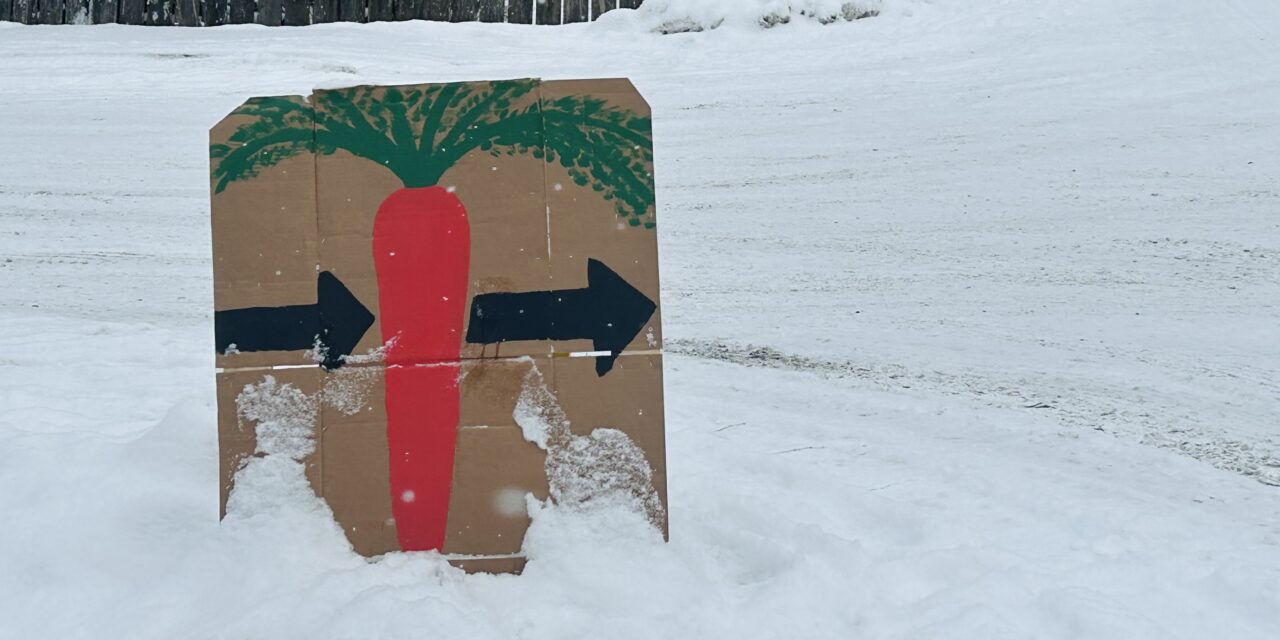Discussions on slugs and mushrooms abounded in Petersburg last weekend. For the first time in four years, a group of farmers, scientists, and entrepreneurs gathered in person for the Southeast Alaska Farmers Summit. Every other year, a different community hosts the event.
Dozens of people from all over the United States crowd the aisles of the Petersburg Lutheran Church. Countless others attend virtually, on Zoom. They’ve come to share resources and best practices on farming in the cold, rainy climate of Southeast Alaska.
Rain-loving slugs are especially challenging for regional growers. Casey Richart, a researcher from Oregon State University, hosted a popular slug identification workshop.
“I recently found out that that slug slime is a liquid crystal — and so is human mucus,” Richart said in his presentation. “And so, my next thought was: then what is a booger?“
The Southeast Alaska Farmers Summit has grown a lot since it began in Petersburg in 2015. That first year it was a 2-day event with about 35 participants. Now, there’s about a hundred people attending in-person.
Jonathan Rubbo and Lucette O’Hagan are two of them. It was their first time in Petersburg. Rubbo says the gathering presented him with a lot of food for thought on composting.
“My big challenge is tapping into the waste stream as a resource to provide for farmers and growers,” said Rubbo. “So I’m trying to divert that waste from the landfill’s transfer stations and make that available for locals.”
Lucette O’Hagan works as a commercial lender, but aspires to become a farmer herself. She said she learned about how challenging it is for Southeast Alaska farmers to secure the funds to build their business.
“From the family farm perspective, [the most challenging thing] is probably financing streams,” said O’Hagan. “So, I’m just letting people know that credit unions are available to help them with financing needs.”
Uyanga “Angie” Mendbayar traveled to Petersburg from Juneau for the conference. She stayed in one of the cannery bunkhouses for the weekend. It was an affordable option for some of the participants.
“I guess I’m just getting a firsthand rural Alaska experience,” said Mendbayar. “For two nights, I couldn’t get good sleep because there’s no heat.”
Mendbayar came for the mushrooms. She has her own startup for mushroom products and gave a presentation on a recent USDA mushroom study.
“I had a little mushroom farm, but my cultivator is moving out of state,” said Mendbayar. “My goal is to find out how can I bring more access to these local foods. I make Reishi treats and Reishi rooibos drinks. I just like being creative with what I can make with small farm products. And mushrooms are really trending right now.”
For over a decade, Mendbayar has worked in environmental research and activism. She’s interested in replacing single-use packaging and other types of plastic waste with biodegradable materials derived from mushrooms. She says Southeast Alaska is a particularly exciting place to explore these ideas.
“We live in a fungal heaven,” said Mendbayar. “Their roots are connected with mycelium, through a mycorrhizal network. We don’t see them in our eyes, but it’s everywhere. The spores are in the air, the roots are connecting underneath us. So when you walk into the forest, it feels you through its nervous system, which is fungus. I want to start a network like that where we can exchange information. Mushrooms have a diverse nutrition profile. And they’re not just good for our health — they’re also good for soil health. Mushrooms give me hope.”
The Southeast Alaska Farmers Summit was funded by the U.S. Department of Agriculture and dozens of regional nonprofits. The next summit won’t be held for at least another year.










